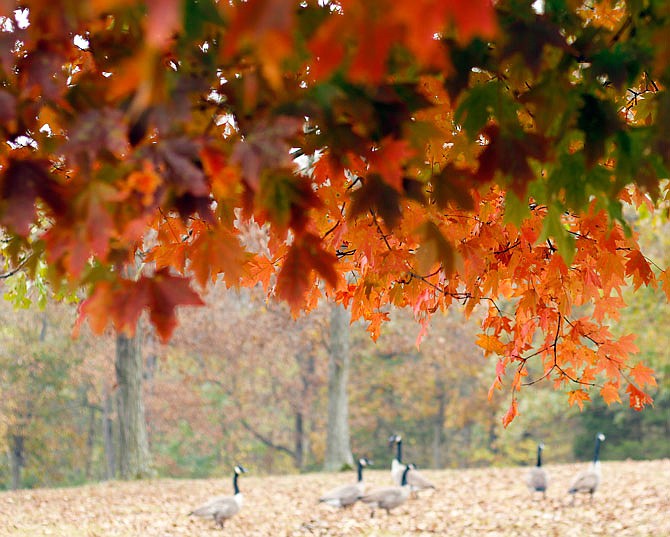The weather in the Midwest, especially in Missouri, can be unpredictable. But there is one colorful show of change native trees go through every year, no matter the weather: fall foliage.
University of Missouri Extension horticulturist David Trinklein said the changing of leaves has been on schedule so far this year.
There are some "telltale trees," like the colorful sugar maple, that can indicate how foliage will show each year. It's all part of the process, Trinklein said.
"It's all done for a reason for nature to prepare the tree for winter," he said.
Fall foliage happens through two processes: dormancy and hardening. Dormancy is triggered by day length - the length of day and of night. As days begin to shorten, this triggers an abscission layer to form between the base of a leaf and its twig. This "incision layer" allows the leaf to fall off. And in between, as the chlorophyll breaks down, leaves begin to show those familiar fall tones.
Trinklein said the weather can play a part in preserving those harvest hues.
"What you would like is mild but clear days and crisp, cool nights," he said. "That combination has been shown to develop the colors more."
When it came to predicting news seasonal changes in the past, farmers often consulted the Old Farmers Almanac (est. 1792) or the Farmers Almanac (est. 1818). Each route had a different method - some use secret formulas kept under lock and key - but each used aspects of solar science, climatology and meteorology.
These days, commerce departments like the National Oceanic and Atmospheric Administration have offered a more well-rounded approach to weather predictions. NOAHH releases six- to 10-day, eight- to 14-day, 30-day and 90-day forecasts frequently for farmers and fall lovers to reference.
Trinklein said predicting the seasons and how fall foliage will turn is more than comparing past predictions: Atmospheric factors aren't found on a page.
"We look at a weather map in two dimensions, and we forget in the air, there are three dimensions," he said. "(Weather) has to be calculated with complex equations based on not just two dimensions, but three."
No matter the method, Trinklein said forecast is "a moving target" and weather predictions are literally up in the air, even with more scientific methods to back them up.
"It's getting more scientific than the Old Farmers Almanac, which takes away romantics and mystique, but does make it more accurate," he said. "We're not going to predict, even scientifically, well in advance the forecast everywhere in the U.S. ahead of winter."
While autumn is still adding pops of color to foliage across Missouri, there are a few places residents can look out for vibrant foliage this year.
Maples along the north side of the Missouri River have been known to show especially colorful leaves, as many of them are sugar maples. You can find them near limestone river bluffs accessible in a day's trip from Jefferson City.
Trinklein enjoys going there himself - the beauty behind the science is undeniable.
"It's indelible on the mind; every time I try to take pictures, it never turns out the way my mind remembers it," he said. "We only have so many of these to witness in our lives, so people should get out and enjoy it."
Visit the Missouri Department of Conservation at nature.mdc.mo.gov/discover-nature/fall-colors for the best locations to view fall foliage.
To view a prediction of how foliage will change this year on a U.S. map, visit smokymountains.com/fall-foliage-map.
For more information on climate predictions, visit NOAA's Climate Prediction Center at cpc.ncep.noaa.gov.

